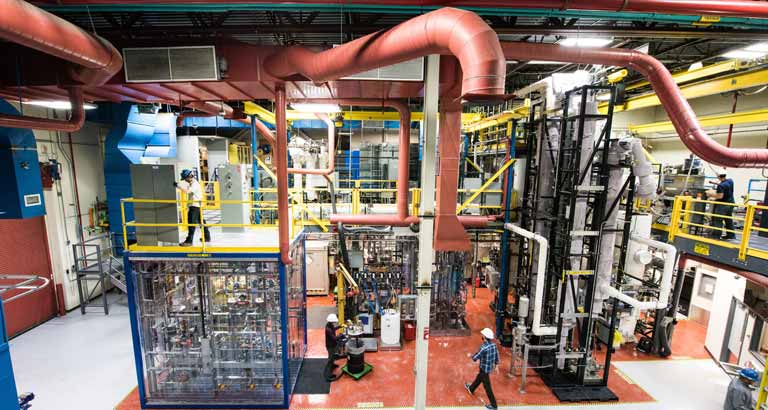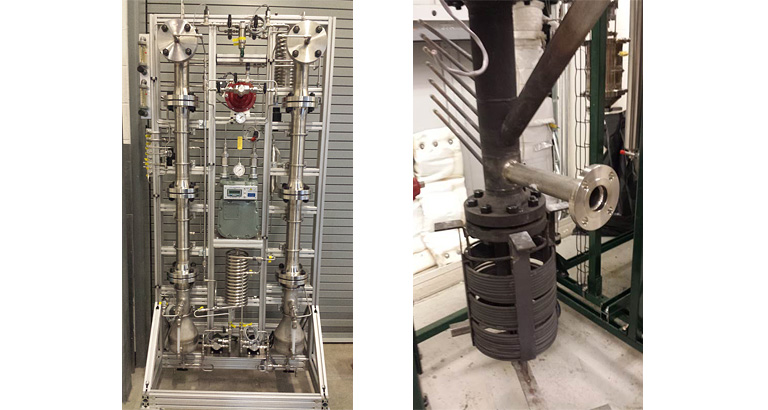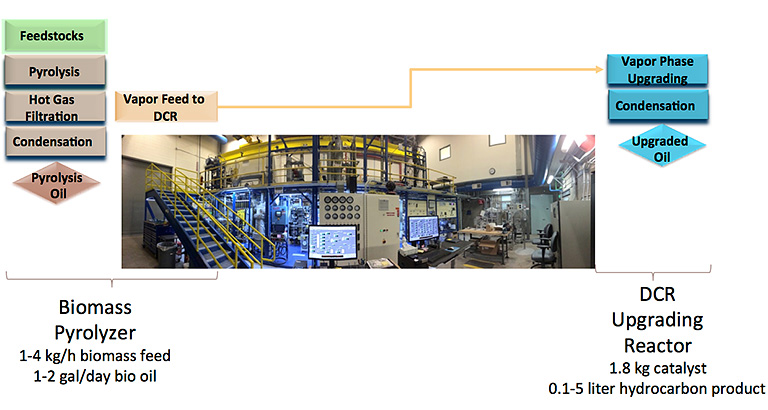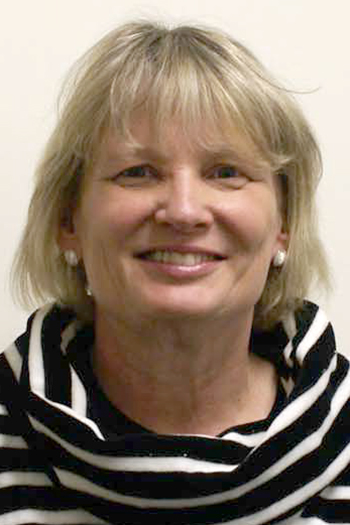Thermochemical Process Integration, Scale-Up, and Piloting
Our mission is to integrate, scale-up, and demonstrate biomass conversion technologies developed at the laboratory scale to an industrially relevant pilot scale.
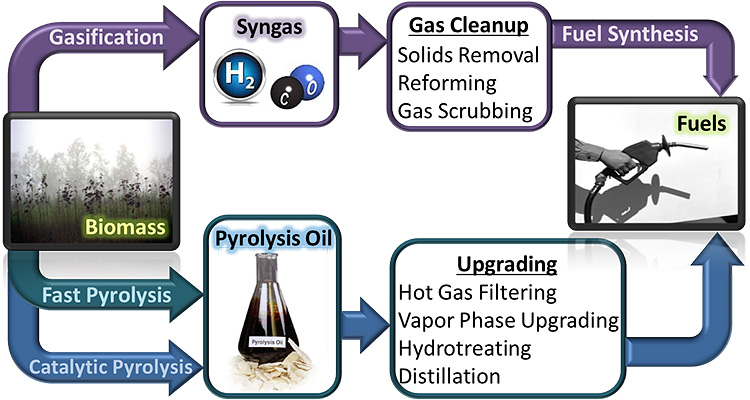
Variety of Pathways
Our pilot-scale systems are capable of testing multiple biomass-to-fuels and chemical pathways including gasification, fast pyrolysis, catalytic fast pyrolysis, and vapor phase upgrading. Our systems are flexible, allowing for modifications based on new technologies and research areas. To learn more about our systems, see Thermal and Catalytic Process Development Unit.
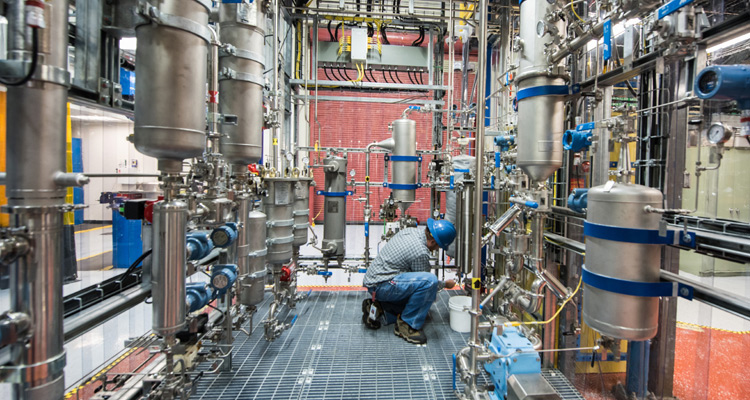
Engineering and Scaled Design
Our engineers work with researchers, consultants, and partners to design reactors and other unit operations to overcome scaling effects and provide innovative solutions. Using our pilot-scale facilities, we can install and test the designs under real operating conditions.
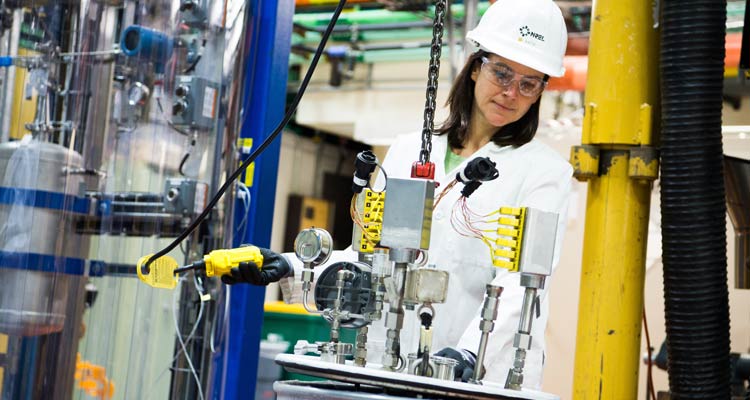
Technology Demonstrations
We demonstrate the current state-of-technology at the pilot scale and provide operational data for use in techno-economic analysis. In 2017, we will demonstrate three thermochemical pathways: (1) syngas upgrading to high-octane fuels and fuel additives, (2) fast pyrolysis followed by hydrotreating, and (3) pyrolysis vapor phase upgrading.
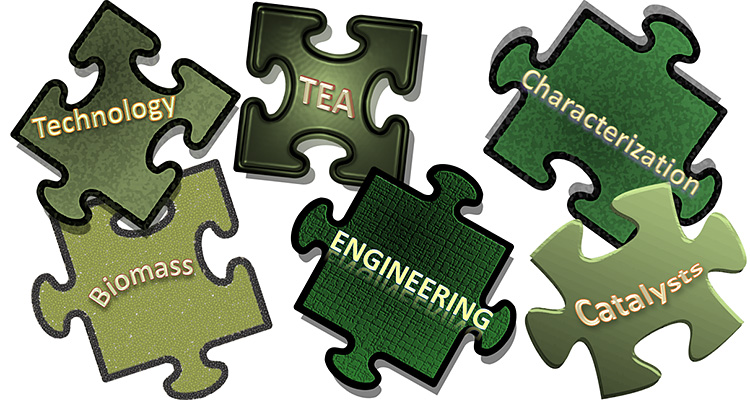
Technology Integration
We work closely with the lab-scale researchers to integrate their work together and provide real-world testing conditions for their feedstock, catalyst, and other discoveries. Data collected from pilot-scale testing is then provided back to the lab-scale research to inform future developments.
Research Team
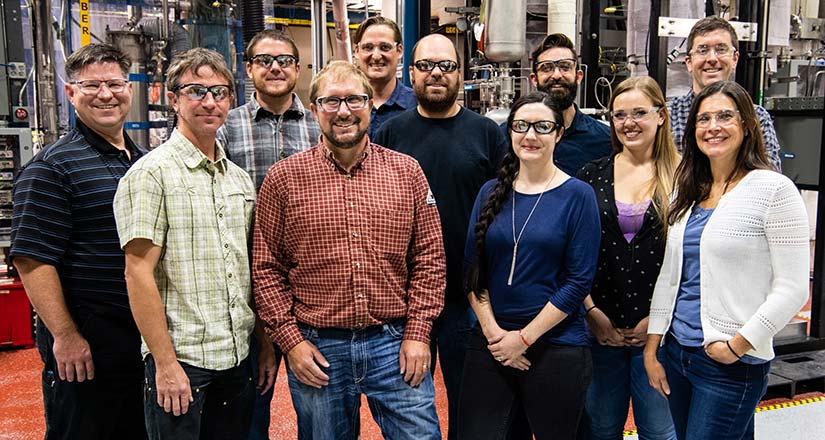
Principal Investigators
Stuart Black
Ray Hansen
Matt Oliver
Kellene Orton
Scott Palmer
Brady Peterson
Marc Pomeroy
Mike Sprague
Alex Stanton
Rebecca Jackson
Related and Integrated Programs
Collaborators
BP
Equilibrium Catalysts
Idaho National Laboratory
Johnson Matthey
Nexceris
Pacific Northwest National Laboratory
Particulate Solid Research Inc.
Springs Fabrication
WR Grace
Zeton
Share

